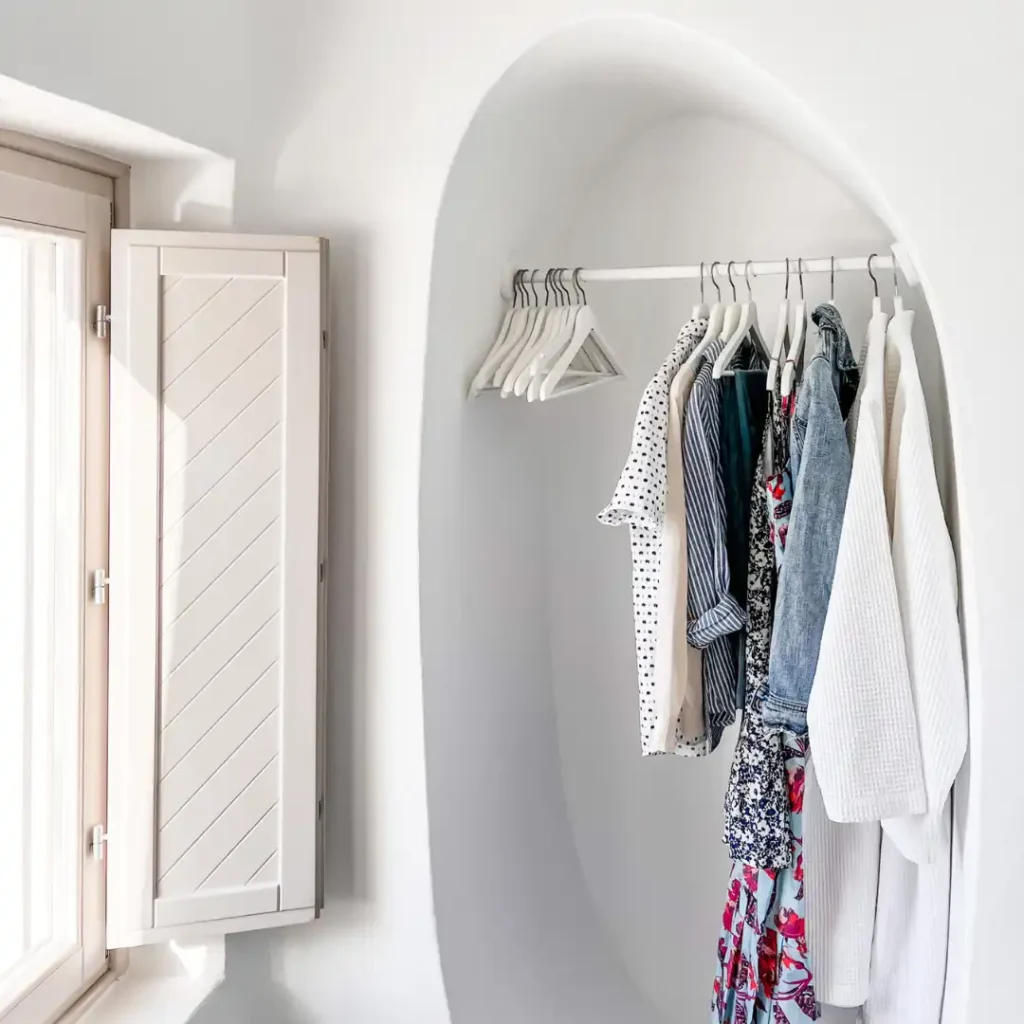
Getting your foot in the door of a retail buying office is just the start of your buying and merchandising journey! The real challenge to career growth is proving you have what it takes to create edit and curate commercially successful collections, make data-driven buying decisions, and manage substantial budgets—all while meeting and exceeding business goals
Ready to take your career to the next level? Whether you’re aiming for a promotion, exploring new roles, or strategically planning your career future, advancement in fashion buying requires a blend of skill, insight, and proactive growth. Keep reading as I share actionable steps and strategies I have used to help you navigate each stage of your career path.
One of the first steps to consider for your career advancement is honing the right mix of technical skills and strategic know-how. These core competencies will help you be more effective in a current role but more importantly lay the foundations for bigger responsibilities.
Here are five critical areas of expertise to focus on:
- Trend Forecasting and Market Analysis: The ability to anticipate and interpret fashion trends for the specific business niche you work in is fundamental. The different processes of Fashion buying / Merchandising are transferable. I believe if you can be a successful womenswear buyer you can also be a successful buyer for menswear or Kidswear or Home textiles. Use all the resources available to you and monitor the market and consumer behaviour to sharpen your forecasting.
- Product Development and Range Planning: Successful buyers must know how to plan and curate cohesive product ranges tailored to their market niche and target consumer. Building this skill involves balancing products and price points to align with the seasonal business strategy.
- Supplier Relationship Management: Cultivating strong supplier partnerships is essential for successful collaborations, efficient sourcing and negotiation. Each season the goal is to continually develop rapport, and work on mutually beneficial terms with clearly communicated goals and expectations.
- Sales and Data Analysis: Analyzing data allows you to make informed decisions about stock, trends, and consumer behavior. Be comfortable with tools that track KPIs like sell-through rates and gross margins, and use these insights to inform your buying decisions.
- Financial Acumen: Budgeting, Open-to-Buy (OTB) planning, and understanding costings pricing and profit margins are essential financial skills for a buyer. Learning to manage these metrics ensures that you not only meet sales targets but also maximize profitability.
A practical approach to improving these skills is to start by rating yourself in each area on a scale of 1 to 5, with 5 being “expert level.” This will give you a clear picture of where you excel and where there’s room to grow. Seek feedback from your line manager, mentor and or colleagues; they can often identify strengths or weaknesses you may have overlooked. Set small, measurable goals, such as dedicating 30 minutes each week to reading otb reports or scheduling monthly check-ins with suppliers to enhance your relationship management.
While technical skills are essential, the soft skills you develop are equally valuable—particularly as you move into mid- to senior-level roles. Areas like communication, negotiation, and leadership have a significant impact on your effectiveness. Communicating clearly with stakeholders, negotiating confidently with suppliers, and inspiring your team are critical skills that directly affect your advancement.
For example, early in my career, I pursued a diploma in business management to complement my Hdip in fashion design which provided an excellent foundation for managing teams and negotiating effectively. Developing leadership skills alongside technical expertise often makes the difference in how far you advance. If you goal is to gain a senior position in fashion buying and merchandising I recommend finding courses, that you can learn additional management skills whether that is leadership, communications team building etc..
Career Growth Roadmap: Junior to Senior-Level Roles
Advancing in fashion buying often follows a progression through junior, mid-level, and senior roles. Here’s a structured roadmap to guide you:
- From Junior to Mid-Level:
- Demonstrate Initiative by seeking additional responsibilities, whether it’s managing a larger budget or taking on a complex project. Keep a record of your achievements to present in performance reviews.
- Develop Cross-Functional Skills by liaising with other departments such as marketing or logistics to understand the broader impact of your role.
- Build rapport with key stakeholders like vendors, suppliers, and team members. Trust and clear communication go a long way in showing your readiness for larger roles.
- Transitioning to Senior Roles:
- Lead strategy-focused projects, such as seasonal buys or working on new product launches. These projects can provide the opportunity to showcase your ability to think long-term and manage large-scale responsibilities.
- Refine your Leadership Skills: by working on your ability to motivate and guide teams. If you don’t have direct reports, try and find mentorship opportunities or lead project teams to demonstrate your leadership skills.
- Be Data-Driven in Your Decisions: Focus on KPIs like sell-through rates, margins, and inventory turnover, and use these insights to optimize your buying strategy.
Staying engaged with the fashion industry outside of your work environment can also set you apart. Be open ro continuous learning through courses, networking events, and trade shows. The Thrive in Fashion Buying and Merchandising Course, for instance, offers resources to deepen your product knowledge, technical skills and sale data analysis.
Networking and mentorship play pivotal roles in professional growth. Surrounding yourself with industry experts can offer new perspectives and advice on overcoming specific career challenges. Additionally, mentors who understand the industry’s intricacies can guide you on what skills are most valuable at different career stages. Join relevant groups on LinkedIn, participate in webinars, or attend trade shows to expand your network.
If you find yourself feeling stagnant in your role, it may be time to reassess your career goals. Here are a few ways to approach it:
- Have an Open Dialogue with Your Manager: This can be during your mid year or annual review or set up a conversation specifically for to discuss your aspirations. Ask for feedback on your current performance and inquire about skills or experiences you need to progress.
- Explore Lateral Moves: Sometimes a shift within the industry can provide new challenges and learning experiences. Moving to a different department or company can give you a fresh perspective and broaden your expertise.
- Consider International Experience: Working in a new market or country can provide unique insights that enhance your skill set and make you a more versatile buyer. Earlier in my career, I embraced varied roles and locations, and each experience enriched my understanding and skills.
Strategic Career Mapping: Develop an Intentional Growth Plan
Career growth in fashion buying isn’t about taking shortcuts; it’s about building a consistent foundation season by season. Think about your long-term goals and look for roles that align with those aspirations. For instance, if you want to specialize in product development, seek opportunities that allow you to work closely with designers or suppliers.
- Define Your Career Goals by identifying your long-term objectives. Are you interested in a senior buying role, or do you eventually want to transition into a merchandising strategy position?
- Once your goals are clear, establish a few short-term objectives. These might include mastering a particular skill or gaining experience with a new product category.
- Find a Mentor: Having someone to offer guidance can provide invaluable insights and advice as you progress.
- Don’t make career moves just for the sake of change. Evaluate potential new roles intentionally: Each transition should have a clear purpose, helping you gain skills or experience that are stepping stones and align with your larger career aspirations.
Here’s an example from my own experience : When I look back on my own career path, I found that the intentional choices I made early on —from getting my first professional role as a designer and then moving companies AND countries TWICE before gaining my first buyers roles with a buying budget of five million euros. The exposure to different working environments and the experience I gained had a profound effect on my career progression. For instance, my initial design roles were with a factories that produced garments for the major high street retailers at the time. Contrast that with my next design role which was in a retail buying office – it was here I gained experience working on direct to retail private label and licensed products. I was fully involved with the buying team , communicating with the suppliers on the product development and setting the seasonal trend direction for the buying teams. I demonstrated my ability to manage design and buying strategies effectively , which paved the way for my future roles in fashion buying and merchandising.
Career growth in fashion buying and merchandising requires a blend of skills, consistent effort, and strategic choices. As you develop your abilities, take every opportunity to showcase your value. Look to align your efforts with your company’s objectives, and make sure you’re prepared to handle increased responsibility. In time, these efforts will build toward a fulfilling and successful career.
If you have any questions about navigating your own path in fashion buying feel free to reach out. I’d love to hear from you and help in any way I can. You an send an email to hello@thriveinfashion.com
Career Growth Checklist: A Step-by-Step Roadmap
- Assess Your Skills: Rate your proficiency in core areas like trend forecasting, data analysis, and financial planning.
- Set Clear Objectives: Define short- and long-term goals that align with your career aspirations.
- Enhance Both Hard and Soft Skills: Commit to ongoing development in communication, negotiation, and leadership.
- Seek Growth Opportunities: Proactively volunteer for challenging projects and take on additional responsibilities.
- Network and Find a Mentor: Connect with industry professionals for insights and support.
- Reflect and Adjust: Periodically reassess your career path and make adjustments to stay aligned with your objectives.
Use this roadmap as a guide to get started and focus on continuously refining your skills to create a rewarding and dynamic career in fashion buying and merchandising. Remember, it’s about persistence, intentional learning, and fully applying yourself to each opportunity.




